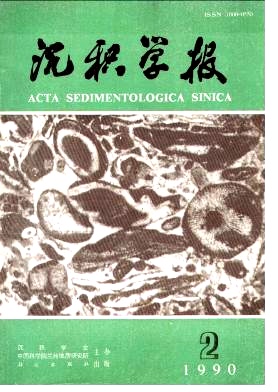SEDIMENTARY ENVIRONMENT OF THE MIDDLE DEVONIAN QUJING FORMATION, QUJING, YUNNAN PROVINCE: A KIND OF MIXING SEDIMENTATION OFTERRIGENOUS CLASTICS AND CARBONATE
- Received Date: 1988-01-04
- Publish Date: 1990-06-10
Abstract: The Middle Devonian Qujing Formation, situated in Qujing, Yunan, provides an opportunity for thestudy of mixing sedimentation. In the study area, the Qupng Formation is characterized by the rocks composed of the mrxed sedrmentsof siliciclastics and carbonate and the interbedding of terrigenous elastic rock and carbonate rokc w rthterrigenous mudstone. The rocks composed of the mixed terrigenous elastic and carbonate sed}menls are vroyeye-catching.Here we name this kind of rocks MIXOSEDIMENTITE.The mixosedimentites are the typmalproducts of mixing sedimentation.The mixosedimentites of the Qujing Formation have the follewmg char;rc-teristics: 1) The rocks are composed of terrigenous sand> silt and mud and marine lime mud andbioclastics: 2) The remains of trees and fish from the land area coexist mth the marine bioclastrcs: 3 ) T hesorting of the mixed sediments is very poor: 4) The rocks are of massive of graded bedding;3 ) There aretrace fossils such as Zoophycos. Rhizocorallium. ChondrUes or Phycodes in the rocks. 60 Themixosedimentites have no vertical or lateral transition with carbonate rocks. The depositronal environment of the Qujing Formation in the study area was mainly representrtivc of gulf, reef--bank and shallow shelf.Rivers flow into the gulf somewhere, carrying terrigenous sediments andthe remains of trees and fish into the sea.The terrigenous mud was the background sediment of the gulf in thenormal condition. But the terrigeneous mud deposition in the gulf was freqently interrupted by the input ofterrigenous elastics and marine carbonate.In the margin of the gulf lay the reef-bank complex, which is themain source of carbonate material.0utside the reef-bank was the shallow shelf characterized by the interbed-ded nodular limestones with mudstones. The mixing sedimentation occurred in the gulf behind reef-bank complex.It is considered that the mix-ing of sediments was most likely caused by storms. Flowing toward the shore, the storm-surge currentseroded the reef-bank and transported lime mud and bioclastics into the gulf. When flowing back from theshore, the storm-surge currents could also transport the terrigenous material into the gulf.The terrigeneouselastics and carbonate could be mixed and rapidly deposited probably out of the suspension to form themixosedimentites or only interbedded with the background mud.
| Citation: | Yang Chaoging, Sha Qingan. SEDIMENTARY ENVIRONMENT OF THE MIDDLE DEVONIAN QUJING FORMATION, QUJING, YUNNAN PROVINCE: A KIND OF MIXING SEDIMENTATION OFTERRIGENOUS CLASTICS AND CARBONATE[J]. Acta Sedimentologica Sinica, 1990, 8(2): 59-66. |






 DownLoad:
DownLoad: